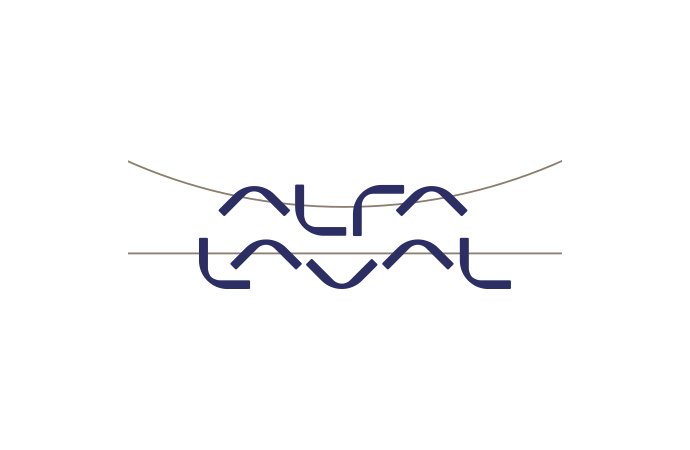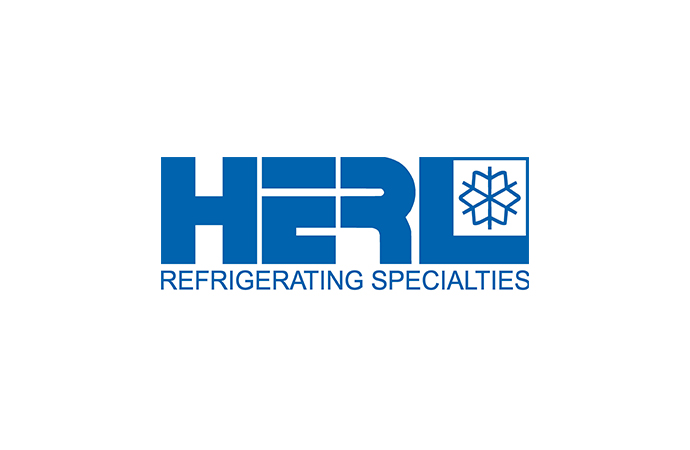In support of the low-charge ammonia systems showcased at the IIAR (International Institute of Ammonia Refrigeration) 2015 Conference & Exhibition, a number of manufacturers showcased components like separators, heat exchangers, wireless temperature gauges and valve stations. Much of it is suited for both ammonia and carbon dioxide, since cascade NH3/CO2 systems are drawing increasing interest in the North American market. + PHOTOS

Alfa Laval’s compact evaporator/heat exchanger
Alfa Laval, based in Lund, Sweden, showcased its U-Turn liquid separator, which sat above one of its M10 semi-welded plate heat exchangers (generally used as an evaporator), which together can support low-charge ammonia applications in industrial settings.
Alfa Laval has more focus on natural refrigerants, and we’re developing products with low-charge such as the U-Turn, said Alireza Rasti, market manager, industrial refrigeration, at the company’s IIAR booth. “We could see the market need for low charge.”
The combined unit is compact enough to fit through a standard door, he noted. This also helps in making the system energy efficient, added Jesper Olsen, market manager, industrial refrigeration. Its capacity ranges from 150 kW to 10 MW.
The system is designed to handle pressures up to 900 PSI, making it suitable for carbon dioxide-ammonia cascade applications. To date, 4-5 cascade systems incorporating the system have been installed in the U.S. The U.S. market tends to be slow to make changes, Olsen said. “Some say they can’t do it just yet. We tell them they’re not the first and they’re happy.”
Still, the adoption of low-charge ammonia systems is accelerating in the U.S. because of the high-cost of PSM (Process Safety Management) programs and the higher cost of failing an inspection. “It’s a small but growing shift,” said Rasti.
Parker’s Bluetooth gauges ideal for small systems.
Parker Hannifin introduced the Smart Service Tool Kit - temperature and pressure gauges that transmit their readings via Bluetooth to a mobile phone app. Designed for service diagnostics, the gauges work with any system but are “ideal for small-ammonia packages,” said Virgil Gulley, market development manager, Asia Pacific.
Gulley observed that “everybody and his brother are into these low-charge schemes,” which he attributed to strict enforcement of federal and local safety codes, especially in California. “They’re writing them up for having a period in the wrong place,” he said. But if they get under 10,000 pounds of ammonia (4,536 kg), they win.”
Being “plug-and-play,” low-charge systems are great for technicians with less technical skills, Gulley said. But he also pointed out some of the potential issues associated with low-charge systems, including efficiency challenges at lower temperatures, the weight of the systems on roofs, and the absence of controls to communicate problems to technicians.
I’m not saying it’s a bad idea, just that there are still things to be worked out,” he said. “These small-charge systems are about 60 tons [of refrigeration capacity]. In our business we don’t start thinking about refrigeration until you get to 300 tons. That’s a radical shift there.”
Danfoss valve station boosts safety.
Danfoss, based in Nordborg, Denmark, unveiled a new valve station, which links multiple valves into a single unit to reduce the number of weldings required for individual valves, thereby reducing leaks and improving safety in ammonia systems.
In the new unit (ICF 15-4), which can be used in a liquid line to an evaporator, four standard valves are combined into a single housing, reducing the number of weldings from six or eight to two. The valves include a solenoid, stop valve, filter and manual opener. The units are rated to 52 bar, making them suitable for CO2 applications. They can also be used in low-charge systems.
The focus of the market is on safety and that’s where the valve station comes in,” said Carsten Dahlgaard, global marketing director, industrial refrigeration.
MORE INFORMATION
Related stories







